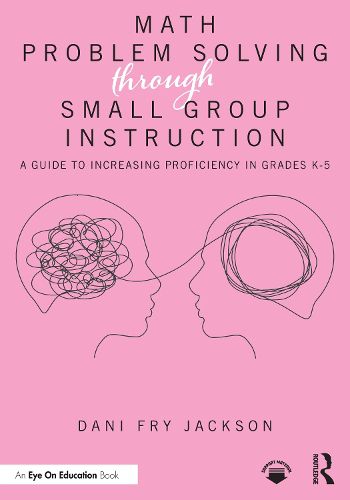Readings Newsletter
Become a Readings Member to make your shopping experience even easier.
Sign in or sign up for free!
You’re not far away from qualifying for FREE standard shipping within Australia
You’ve qualified for FREE standard shipping within Australia
The cart is loading…






Problem solving in math is complex. When students struggle, it can be difficult to diagnose where the breakdown is happening. This book defines how reading comprehension, math computation, and self-efficacy impact students' problem-solving abilities, and how you can support them in each area, with a particular focus on the use of small group instruction.
Chapters break down the process of problem solving into an easy-to-follow progression with lessons provided throughout. There is a step-by-step guide to help you analyze students' work with tips on managing flexible small groups. Learning targets help to show when students have mastered each step of a problem, or flag difficulties you can assist with along the way. The author includes tasks for each grade level with an example response plan as a guide, alongside meaningful research informing small moves that can make big gains.
Great for math educators of grades K-5, administrators, and math curriculum coordinators, this book will leave you feeling confident in identifying student behavior around mathematical problem solving and addressing it with detailed ways to respond with exactly what your students need.
$9.00 standard shipping within Australia
FREE standard shipping within Australia for orders over $100.00
Express & International shipping calculated at checkout
Problem solving in math is complex. When students struggle, it can be difficult to diagnose where the breakdown is happening. This book defines how reading comprehension, math computation, and self-efficacy impact students' problem-solving abilities, and how you can support them in each area, with a particular focus on the use of small group instruction.
Chapters break down the process of problem solving into an easy-to-follow progression with lessons provided throughout. There is a step-by-step guide to help you analyze students' work with tips on managing flexible small groups. Learning targets help to show when students have mastered each step of a problem, or flag difficulties you can assist with along the way. The author includes tasks for each grade level with an example response plan as a guide, alongside meaningful research informing small moves that can make big gains.
Great for math educators of grades K-5, administrators, and math curriculum coordinators, this book will leave you feeling confident in identifying student behavior around mathematical problem solving and addressing it with detailed ways to respond with exactly what your students need.